Bats typically live in caves, the hollow of trees, mines, bridges, and crevices. They are the only mammals that can fly.
They can see but rely on echolocation (acoustic orientation) to locate their prey. They can catch food in their mouths, but most of the insects get caught in the membrane of their wings as they fly.
There are twenty-five bats that you may observe in California. Continue reading to find out more.
Table of Contents
Types Of Bats In California
1. California Leaf-nosed Bat
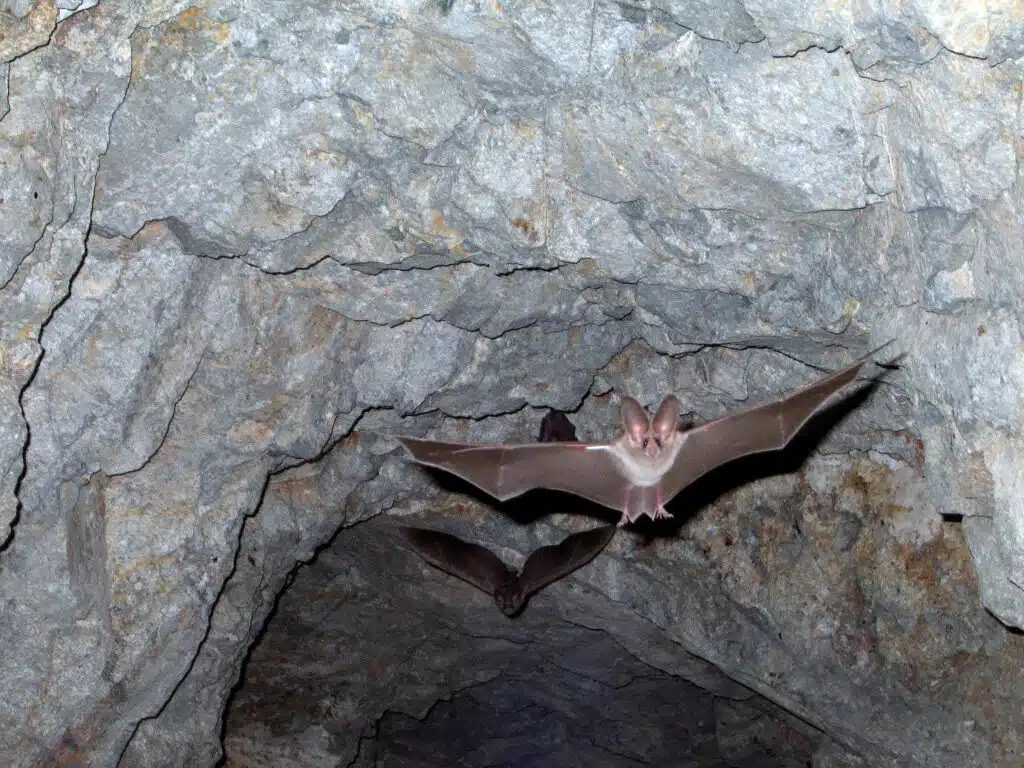
The California Leaf-nosed Bat (Macrotus californicus) grows to 6cm in body length and more than 30cm in wingspan.
These brown bats have a fleshy piece of skin protruding over their nose, called a nose leaf. They have large ears and are very maneuverable when flying.
They can fly at low speeds, using little energy. They do not migrate, as their wings are not suited for long distances. When they fly they hold their back legs behind them.
They are common in the Mojave Desert and the Sonoran Desert scrub habitats in Southern California.
2. Mexican Long-tongued Bat
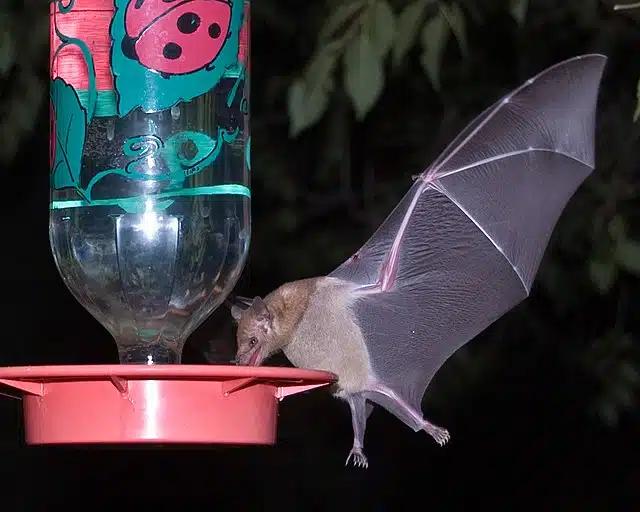
Mexican Long-tongued Bats (Choeronycteris mexicana) are medium-sized bats that are gray to brown in color, with the shoulder being lighter in color. Their wings are dark-brown to gray with the tips being lighter in color.
The ears are the same color as the body with a short tail. They have a long snout with a nose leaf. Their long and narrow tongues are extendible, which helps them feed on nectar.
They rely on echolocation and are sensitive to higher frequencies.

They are common in Southern California, often found at altitudes between 300 meters and 2400 meters. The populations in the north, migrate to the south in the winter months.
3. Lesser Long-nosed Bat
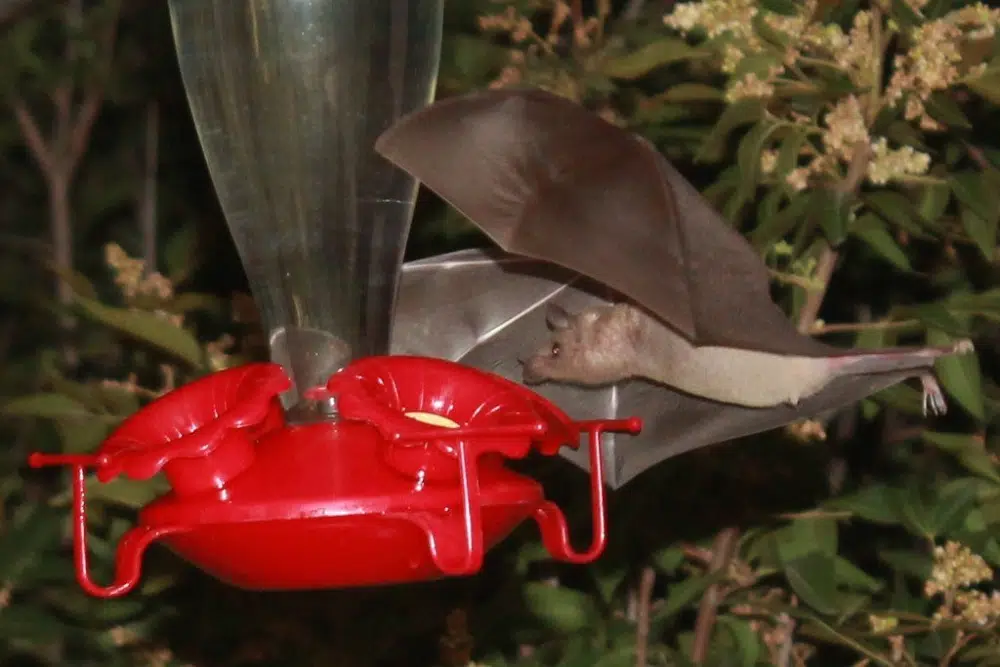
The Lesser Long-nosed Bat (Leptonycteris curasoae yerbabuenae) is a small bat that grows to 8cm, weighing up to twenty-five grams. They have a long and narrow snout with a small nose leaf. They have no visible tail. Their tongues have long ridges and rough papillae for lapping nectar.
They can fly long distances in open habitats. They are gray or yellow/brown in color with rusty brown fur on their belly with small ears. They lie in grasslands, scrubs, and forests around 1800ft. They can also tolerate high temperatures up to 106ºF.
They are summer migrants to California and migrate south in September. Some can migrate 1,600 kilometers each year.
4. Little Brown Bat
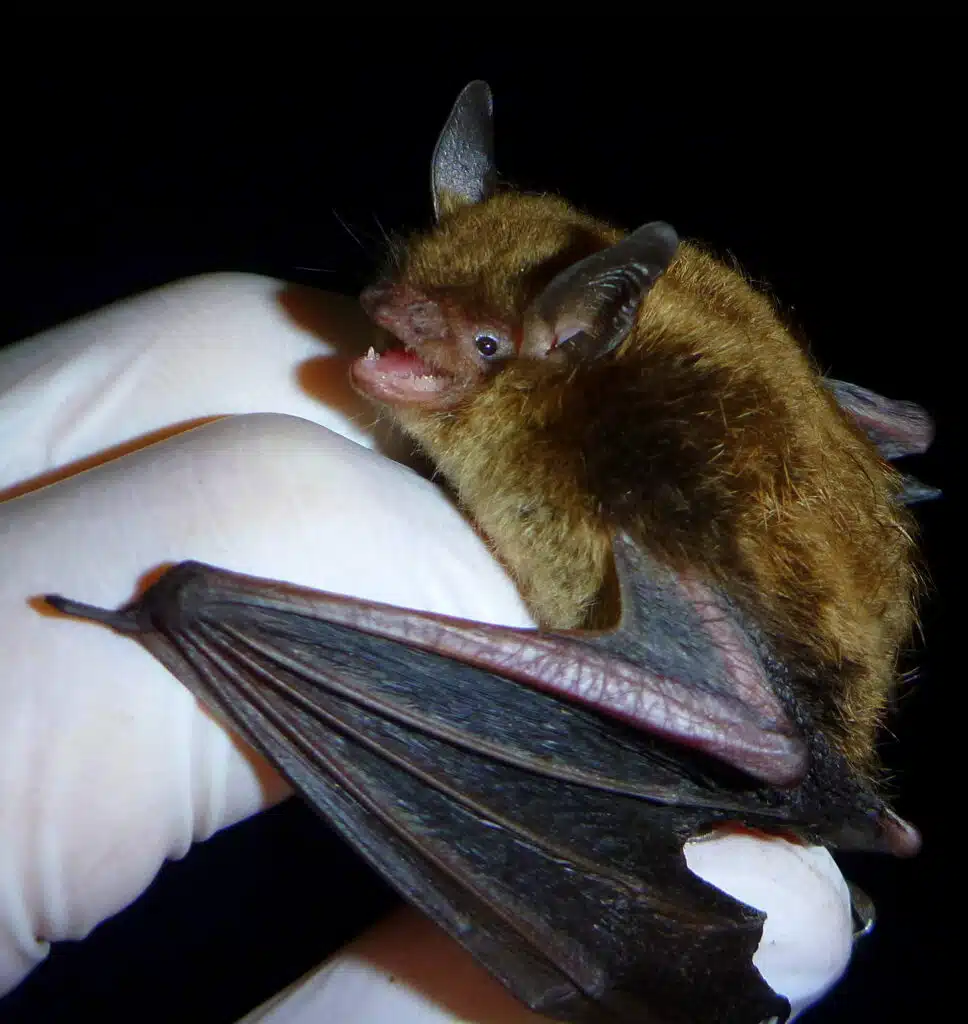
The Little Brown Bat (Myotis lucifugus) is a mouse-eared bat with a small body and glossy coat. The females have one offspring each year.
These nocturnal mammals forage for insects at night, roosting in buildings, and the hollow of trees during the day. They rely on echolocation to locate prey. They are prey to owls and raccoons.
They are encountered regularly by humans as they roost in buildings, some in colonies, which are considered pests.
They very rarely test positive for rabies.
They can grow to 3.7 inches (9.5cm) in body length and weigh up to 12.5 grams. Females are larger than males. They can range in color from dark brown to a pale tan with the belly being lighter than their backs.
5. Arizona Myotis

The Arizona Myotis (Myotis occultus) is a small bat that can grow to 4cm, including the tail with a 9.6cm wingspan. Their fur is a glossy brown and has a tint of cinnamon. The face is lighter in color.
They are often found at elevations from sea level to 9.200ft above sea level.
6. Yuma Myotis
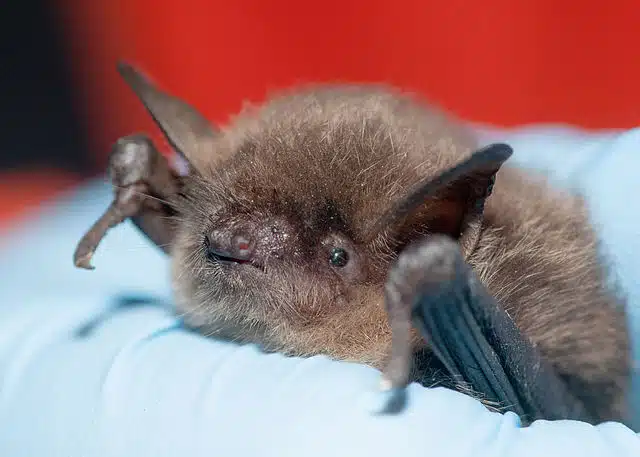
This small bat (Myotis yumanensis) grows to 4.8cm in body length with a wingspan of around 24cm. The Yuma Myotis varies in color from dark brown to gray and tan with a dull and short coat with an almost white belly. They have a moderately long ear with large feet and a short snout.
They are commonly found in lowland habitats from scrubs to forests, usually close to water, including ponds and lakes. They roost in thousands, in attics, buildings, under bridges, mines, and caves.

7. Cave Myotis
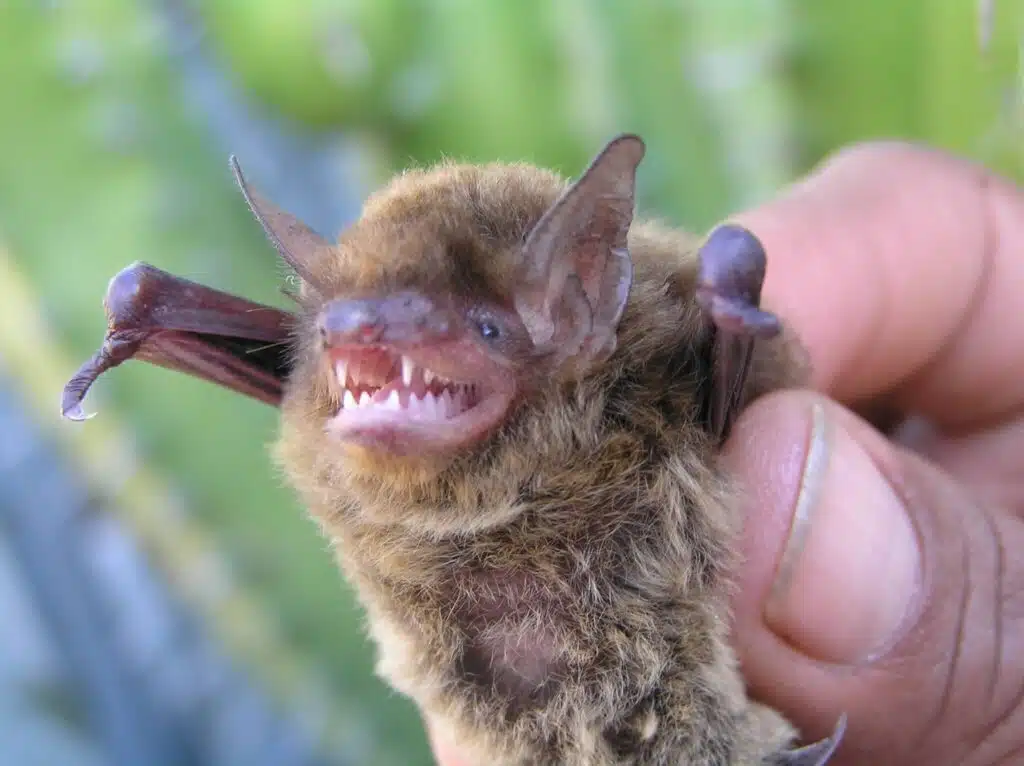
The Cave Myotis (Myotis velifer) is larger than the rest of the bats in the Myotis group. They are brown with short ears and a bare patch on their backs. The male is smaller than the female with a forearm length of 44mm.
They are commonly found in caves, mines, and buildings. During winter hibernation they can group in the thousands on cave ceilings.
8. Long-eared Myotis
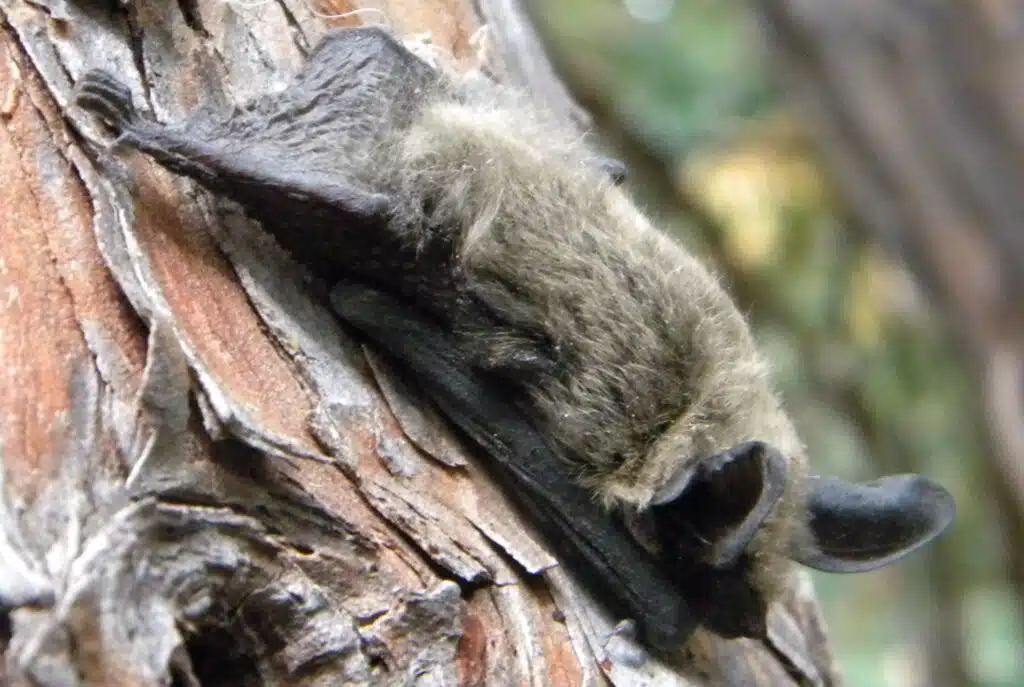
Long-eared Myotis Bats (Myotis evotis) are light brown to straw color with black ears and black wing membranes. The face is also black. Those found closer to the coast tend to be darker in color.
They can be found in a range of environments including prairies, forests, and shrublands where they prefer to be anywhere from sea level to 9,280 feet. They tend to roost in rock crevices, abandoned buildings, caves, and the hollow of trees. They choose crevices that are vertical in orientation with an overhang at the opening.
9. Fringed Myotis
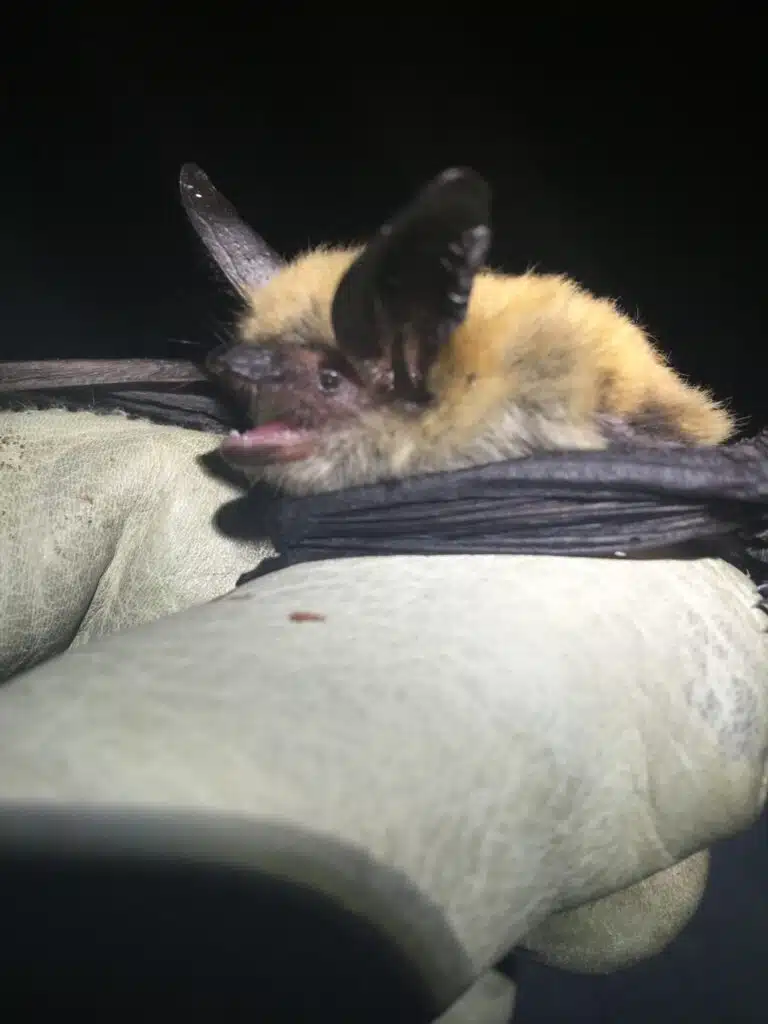
The Fringed Myotis (Myotis thysanodes) has short hairs between the membrane between the hind legs. They can live up to eighteen years with a body length of around 8.5cm.
Their ears are around 1.65cm and project in front of the snout. Their coats are a light brown to olive on their backs and off-white on the belly.
They are mostly found in woodland habitats and can be found as low as 150 meters in California. They are mostly active within five hours after the sun has set and are seldom seen when it rains, as the rain interferes with echolocation and thermoregulation, along with flight.
They migrate between October and March. They fly at low speeds with excellent maneuverability and tend to remain close to a vegetation canopy when hunting.
10. Long-legged Myotis
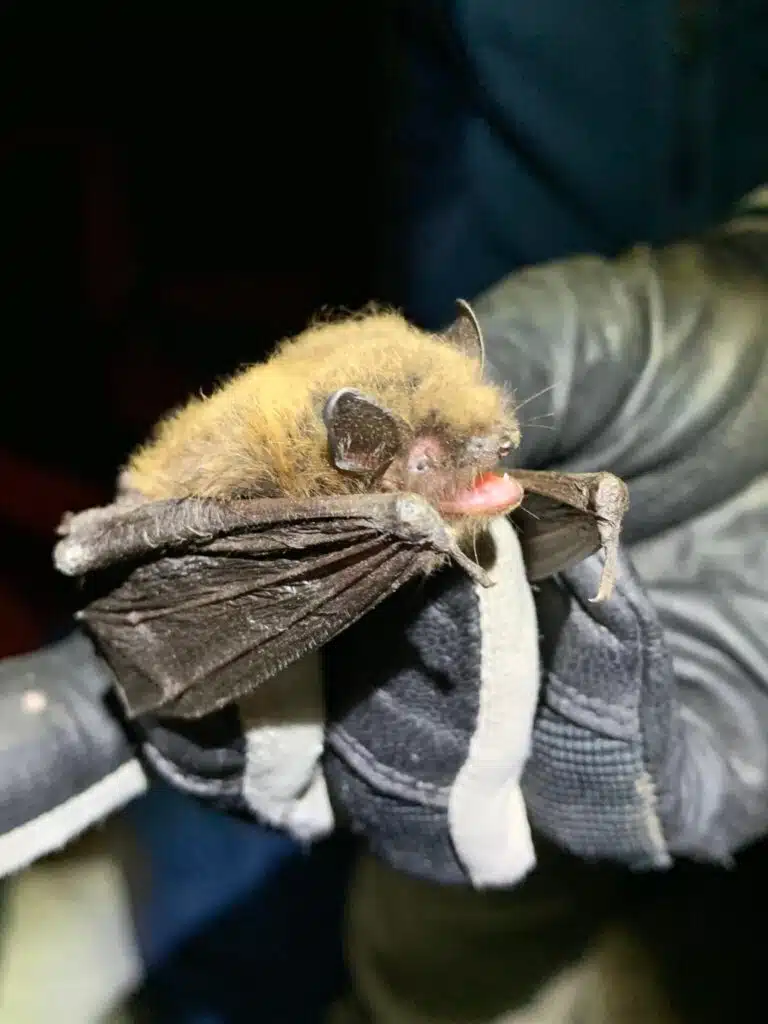
The Long-legged Myotis (Myotis volans) are related to the little brown bat and are the second-largest Myotis species with a wingspan of 12 inches.
They range from red/brown to chocolate brown and light brown with rounded ears. They have fur under their wings, extending from their body to their knees.
They live in a variety of habitats including conifer forests, woodlands, and meadows. They eat mostly moths, though they do eat other insects. They forage just before sunset, though they are known to forage throughout the night.
11. California Myotis
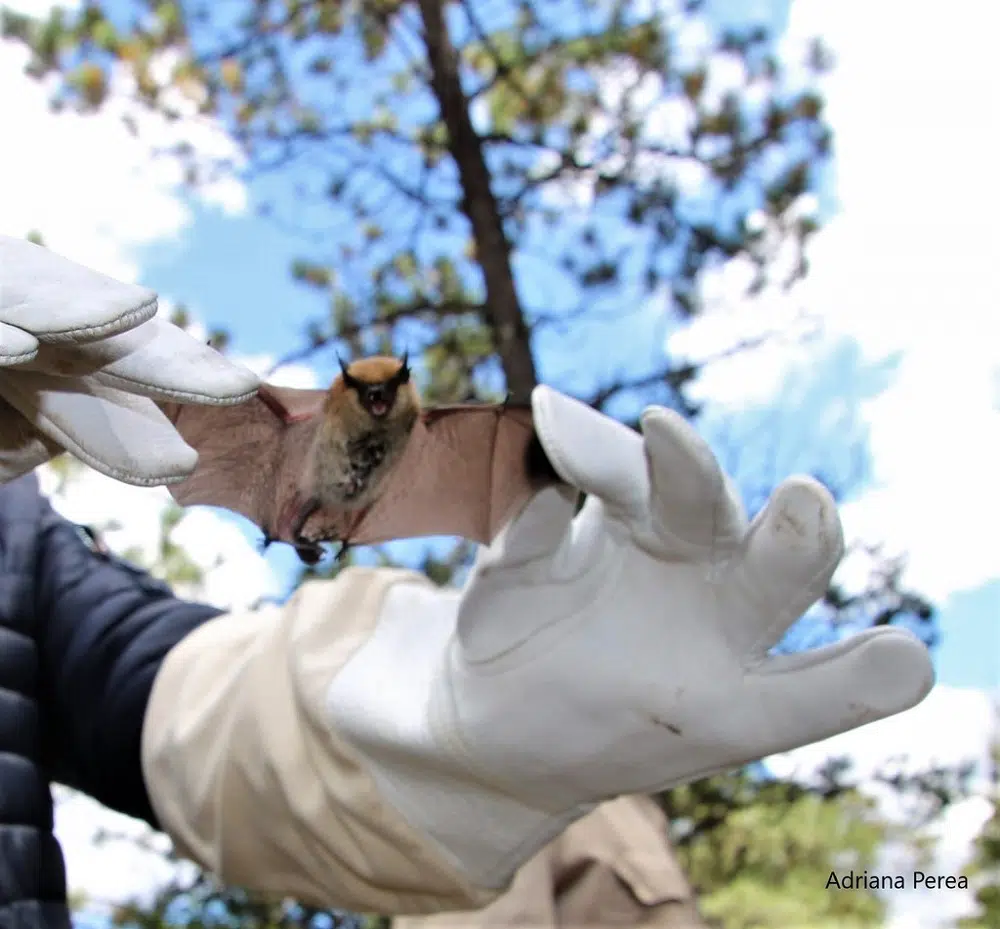
The California Myotis (Myotis californicus) is a small bat with dull fur, growing to around 9.4cm in body length and weighing up to 5.4 grams. They have medium-sized ears which are narrow and pointed. The face is lighter than the body.

They roost during the day in the hollow of trees, especially pines, buildings, and rock crevices. They are not common in urban areas, preferring forested locations.
They forage just after dusk and right before dawn where they prey on moths, flying insects, and flies. They are slow flyers with excellent maneuverability.
12. Western Small-footed Bat
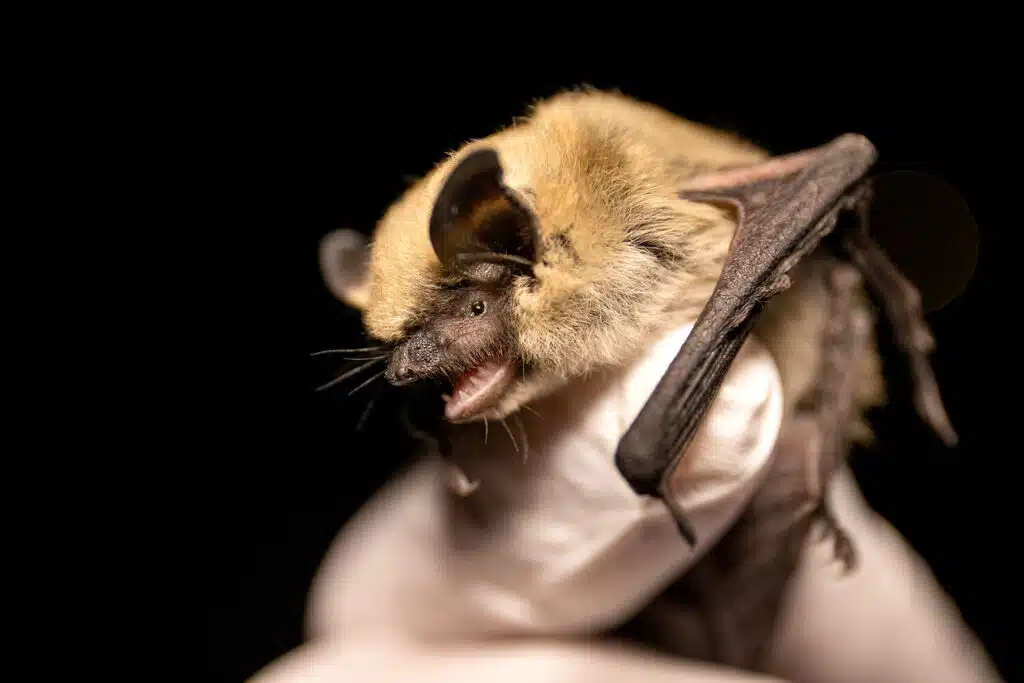
Western Small-footed Bats (Myotis ciliolabrum) are mall bats growing to 10cm in body length and a wingspan of up to 24cm. They are yellow to brown in color with a lighter belly. Their chins and muzzles are black with long ears and tiny feet.
They are common in semiarid habitats including deserts and pine or juniper forests at higher elevations of up to 10,830 feet.
13. Silver-haired Bat
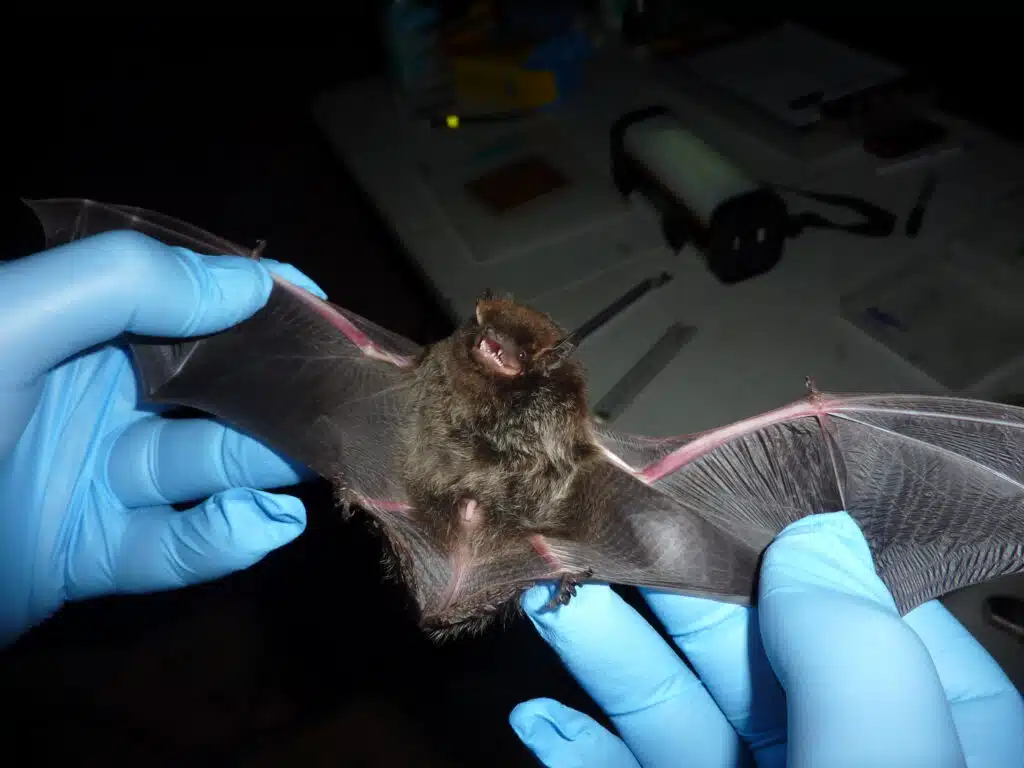
The Silver-haired Bat (Lasionycteris noctivagans) is a medium-sized bat that has black ears, wings, and interfemoral membranes with white-tipped hairs, giving them a frosted appearance. They have a flattened skull and can grow to 10cm in body length.

They are common at low elevations during migration and roost in bark crevices and tree hollows, blending into their environment. Some do move into buildings over the winter months.
There is 75% of these bats killed by wind turbines. They are vulnerable to population threats due to their low reproductive rates. These bats are responsible for most human rabies deaths, due to the strain that they carry.
14. Canyon Bat

The Canyon Bat (Pipistrellus hesperus) is a small bat with a wingspan of only 2.15cm and a body length of 8mm. Females are slightly larger than males and they range in color from pale yellow or white to dark brown.
They are darker on their backs and lighter on their belly. Their ears, feet, flight membranes, and faces are almost black. They have short and broad wings giving them low speed, flying as low as five miles per hour.
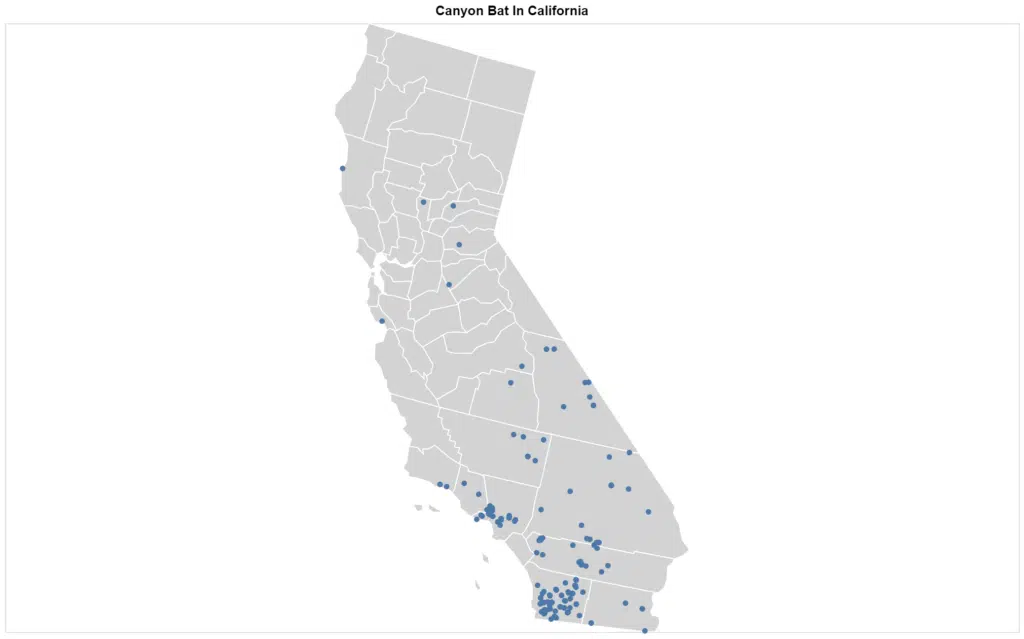
They are common in deserts and lowlands, commonly bound below 5,000 feet. They tend to roost in rock crevices during the day, though they are known to move into buildings, under rocks, and in mines. They are very small and are vulnerable to dehydration.
They are usually the first bat you will see in the evening and the last bat in the morning. They are active right after sunset and right before sunrise, they are not active the rest of the night.
They have a fluttery and erratic flying pattern.
They hibernate in colder weather when the insects start to subside. They do not hibernate in large groups and tend to be found on their own.
Females give birth in June and usually have two young with the female raising them on her own, sometimes in maternity colonies of up to twelve bats. Babies can fly within three weeks.
15. Big Brown Bat

Big Brown Bats (Eptesicus fuscus) are vesper bats, that were first described in 1796. They are large bats that have a wingspan of up to 35cm. Adults can grow to 13cm in body length with a red to brown fur that looks glossy, the belly is a lighter brown.
Their wing membranes and snouts are hairless and black with rounded ears. Their snouts are flattened and rounded and they have large incisors, which are prominent.

They roost in a host of structures including rock crevices, storm drains, tree hollows, and woodpiles.
Males are often seen on their own during the summer, though they sometimes roost with females. Females tend to use the same roost every year with offspring returning to their original roost area.
They rely on echolocation to navigate, helping them identify how far an object is, along with size and shape.
16. Desert Red Bat
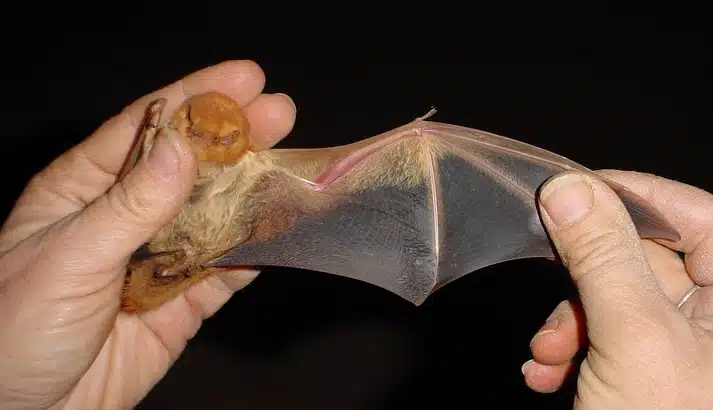
The Desert Red Bat or Western Red Bat (Lasiurus blossevillii) migrates in the winter months, migrating to southern America in winter and then north in the summer. They hibernate under forest leaves, with their color helping them camouflage into the dead leaves.
They prey on insects, such as flies, beetles, and moths, using echolocation to identify where the insects are. They are preyed on by owls, possums, and raccoons.
The male and female desert red bat have different migration routines, with females found in warmer climates during the winter months.

17. Western Yellow Bat
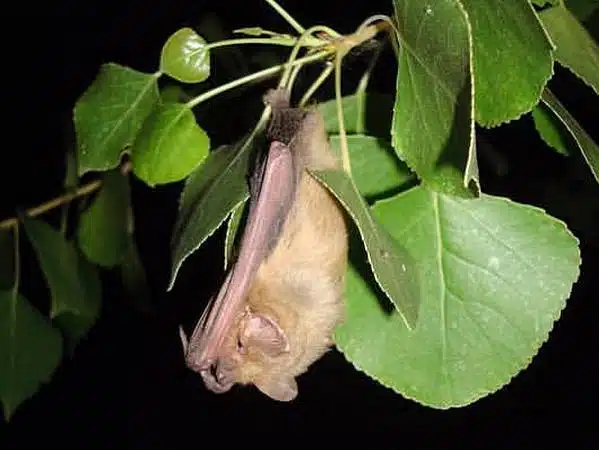
Western Yellow Bats (Lasiurus xanthinus) are small bats that are bright yellow and only weigh up to 16 grams.
They are common in Baja, California and they have a wide geographic range in the United States, which means they are not of concern, with a large population and are unlike to experience a rapid decline in population.
18. Hoary Bat
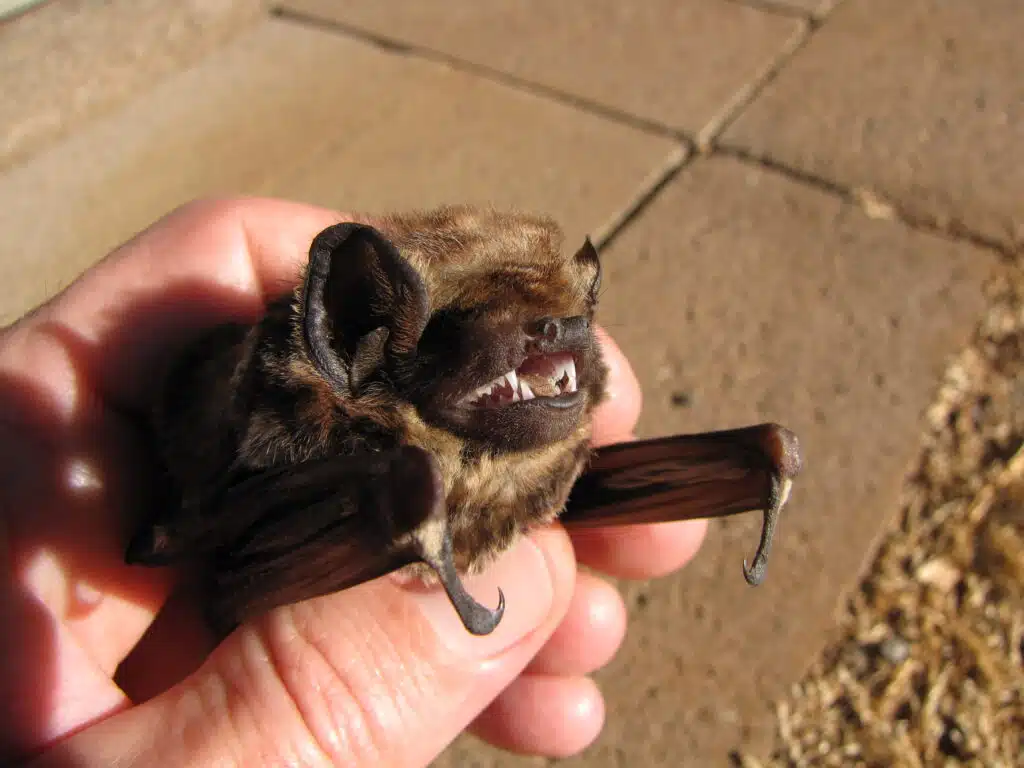
The Hoary Bat (Lasiurus cinereus) can grow to 14.5cm in body length with a 40cm wingspan. They are large bats with a sense dark brown coat with white tips on their hair. The only part of their bodies not furry is under the wings.
Females are up to forty percent heavier than males. They tend to roost on their own, hidden in the foliage of trees, though they have been observed in caves with other bat species.

They prefer woodland areas, hunting over open areas. They hunt alone searching mostly for moths, covering up to forty kilometers when hunting.
They spend their winters in Central America and return to North America in the spring and summer.
They are not considered endangered, but they do have a high mortality rate due to wind turbines with forty percent killed by wind turbines each year.
There were more than one thousand hoary bats killed by wind turbines in 2005 with the majority of deaths being during migration, with the belief that they are attracted to the height of the structure, relying on them for rest.
19. Spotted Bat
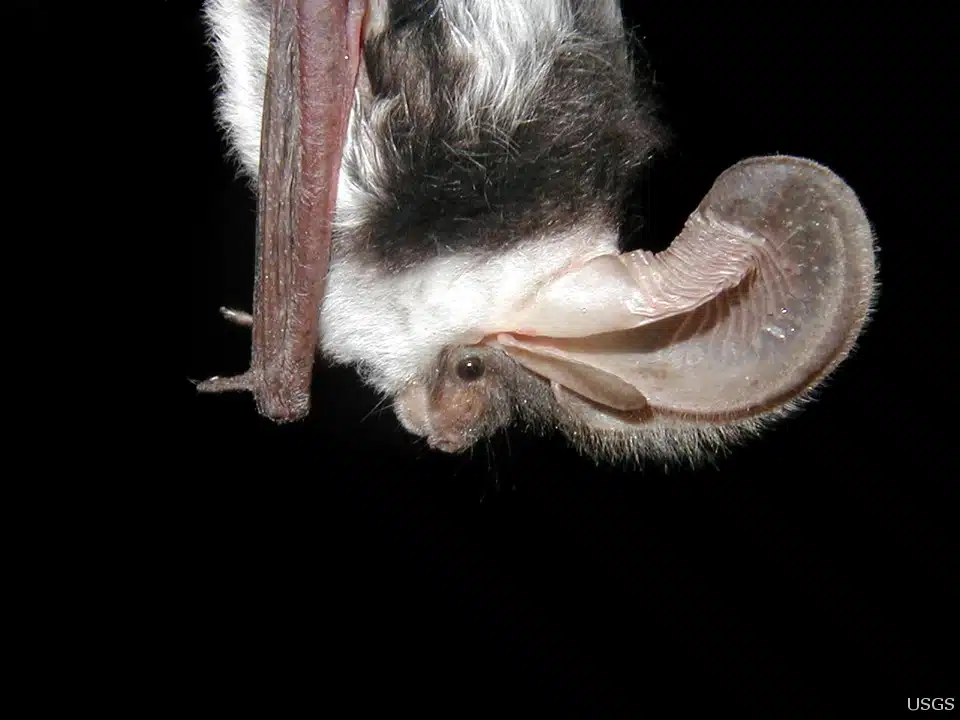
Spotted Bats (Euderma maculatum) were first described in 1892 and can grow to 12cm in body length with a 35cm wingspan. They have three white spots on the back, which are black in color. They have large ears.
They produce one juvenile in June or July and forage for moths and grasshoppers. These bats choose undisturbed roosts, such as forests, hayfields, deserts, shrub grasslands, and marshes.
20. Townsend’s Big-eared Bat
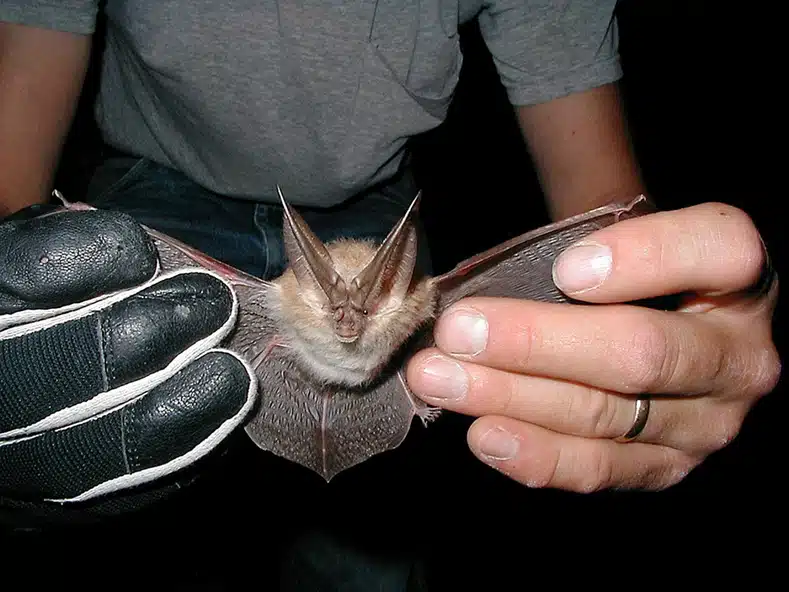
Townsend’s Big-eared Bat (Corynorhinus townsendii) is medium in size with long ears and small lumps on the sides of the snout. They grow to 10cm in body length with a wingspan of around 28cm.
Their mating season is late fall with the female storing the sperm until fertilization in spring. Females only give birth to one offspring at a time.

They roost in abandoned buildings, caves, and mines, along with the hollow of trees. In summer they prefer caves, rocky crevices, and buildings, while in winter they prefer rocky crevices, tunnels, mines, and caves.
The males and females have separate roosting sites during summer, with males being on their own and females in maternity colonies. Maternity colonies can have up to two hundred Townsend’s big-eared bats.
They hibernate during winter in tightly packed clusters, helping to stabilize their body temperatures against the cold.
Males choose warmer places to hibernate than females. They can fly up to 12.3 miles per hour on a straight-line course, feeding up to three times between sunset and sunrise.
21. Pallid Bat
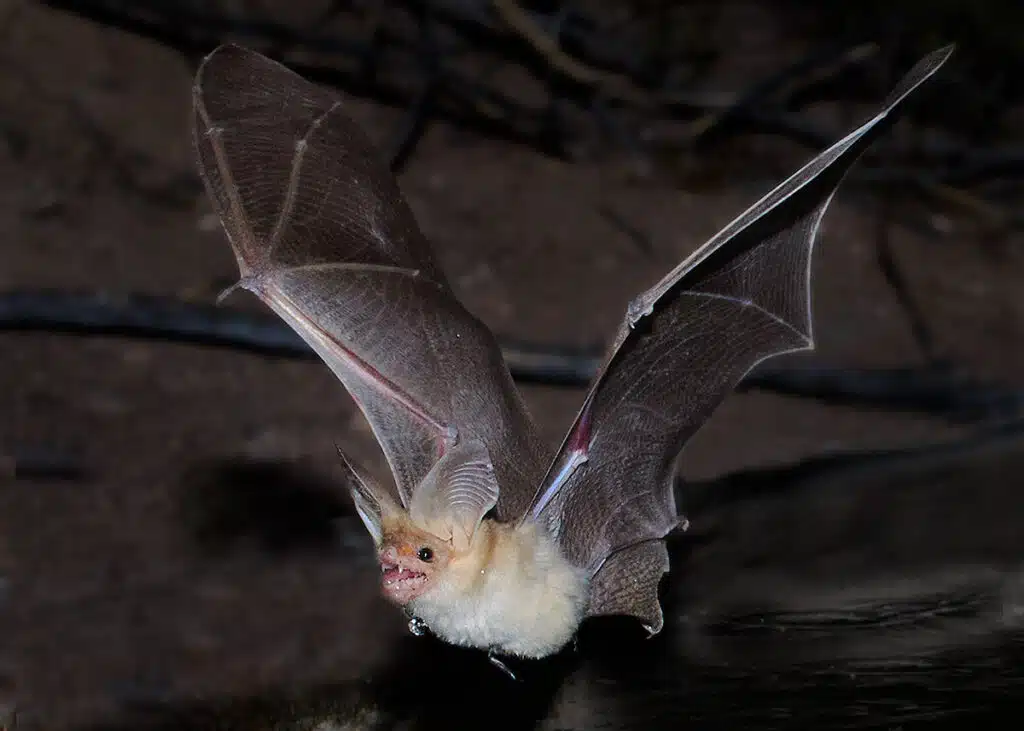
Pallid Bats (Antrozous pallidus) can grow to 7.9cm in body length with a wingspan of up to 40cm. They are large bats with forward-pointing ears with pale fur at the roots and brown on their backs. The belly is lighter in color. They have a blunt snout.
These bats are often counted in semi-arid and arid habitats, close to water. They also choose vegetated grasslands.

They roost in crevices and cracks including tile roofs and rocky outcrops. At night they roost closer to where they forage, which is less protected than the roost they choose during the day. In winter they choose caves and buildings to roost in.
They feed mostly on crickets and can eat up to half their weight each night. They fly very low, usually up to two metes off the ground. They are resistant to scorpion venom, with scorpions being one of their preferred meals.
They have the unique ability to control their body temperature with their size varying based on their habitat. Those in desert areas are smaller than those in coastal regions.
22. Mexican Free-tailed Bat
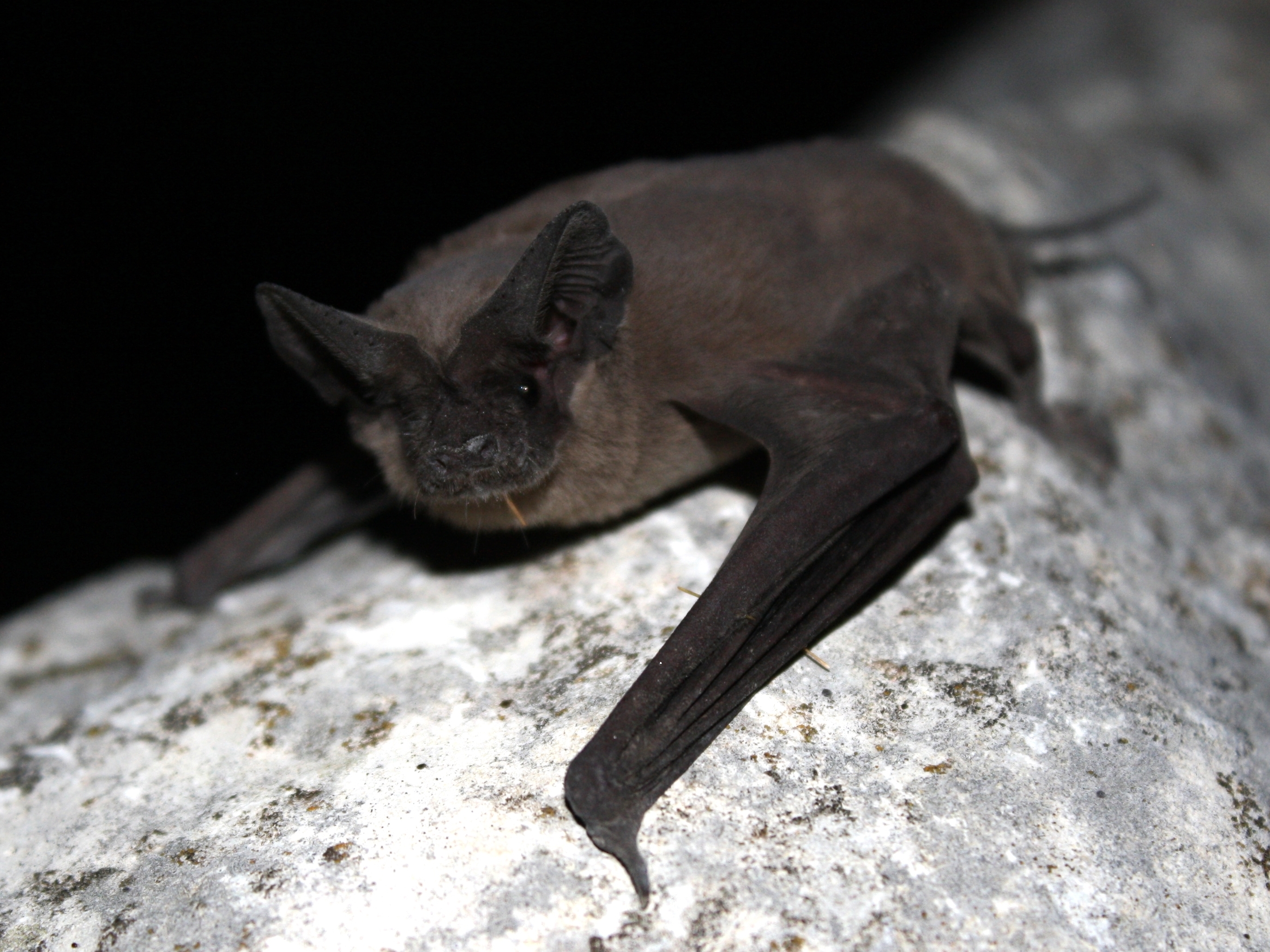
The Mexican Free-tailed Bat (Tadarida brasiliensis) can grow to 9cm in body length with females being on the heavier side. The tail is almost half their length with wide and rounded ears, which help with echolocation.
They have deep wrinkles on their upper lip with a z shape under their molar, which they use to grind on insects. They have narrow and elongated wings with pointed tips, assisting with a straight flight. They can range in color from gray to dark brown. They have large feet with white bristles.
They congregate in colonies at altitudes that range from 180 to 1,000 meters above sea level, flying up to 3,000 meters above sea level.
They live mostly in caves but are known to roost in buildings where they have access to dark recesses and openings. They will roost in any building they can gain access to, including new buildings. When found in caves, they can congregate in millions of bats. Those in Florida prefer buildings and man-made structures over forested areas.
23. Pocketed Free-tailed Bat
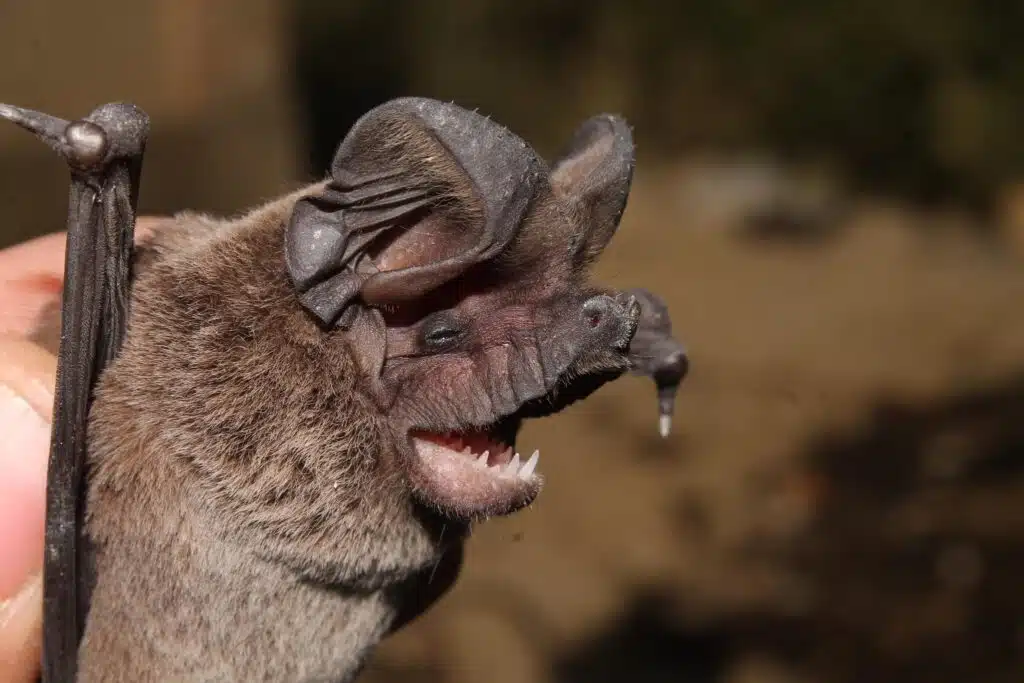
The Pocketed Free-tailed Bat (Nyctinomops femorosaccus) gets its name from the fold that is a shallow pocket at the knee.
Their ears join at the midline with large broad heads and grooved lips. They have stiff hairs on their face. The ears are thick and leathery.
They can grow to 11.2cm in body length and their weight can range up to 14 grams. They eat a variety of insects, specifically beetles, due to their limited flight maneuverability. During the dry seasons, they drink water from open-access water sources.
24. Big Free-tailed Bat
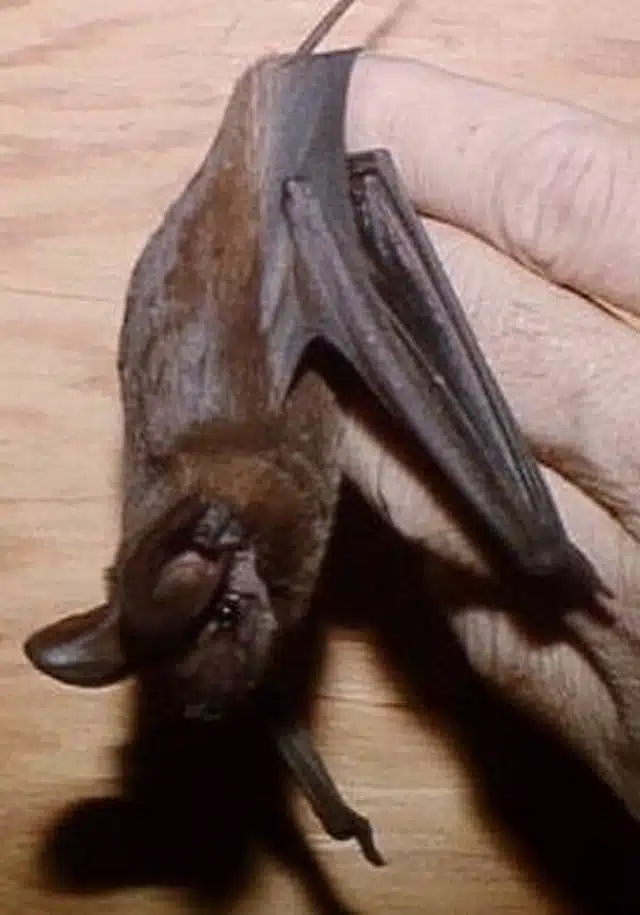
The Big Free-tailed Bat (Nyctinomops macrotis) can weigh up to 20 grams with a wingspan of up to 43cm. They have a glossy coat, which varies in color from red-brown to black or dark brown.
They can fly at rapid speeds of up to 40 kilometers per hour. They live up to 2,600 meters above sea level with those found in California considered non-vagrant.
These bats are insectivores and forage at night, once the sun sets, returning to their roots by sunrise.
25. Western Mastiff Bat
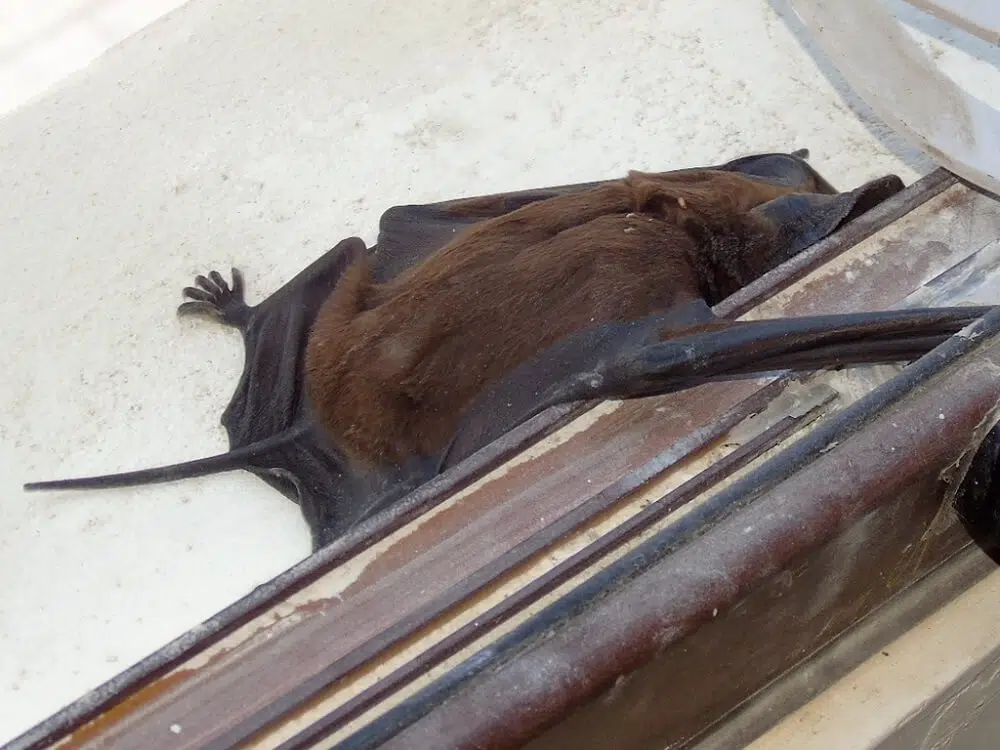
Western Mastiff Bats (Eumops perotis) can grow to up to 19cm in body length with a wingspan of 56cm. They have chocolate brown fur and can weigh up to 70 grams.
They rely on height to take off, needing at least three meters of space under their roosting spot. Often you can hear their echolocation squeaks from three hundred meters away and is audible to humans, which is unusual for bats.
They form colonies of no more than one hundred bats, roosting together during the day. They are sometimes active in winter, though some migrate and others hibernate. Eighty percent of their diet comprises moths.
Biggest Bat In California
Out of the bats you may observe in California, the Western mastiff bat is the largest with a body length of 19cm and a 56cm wingspan, weighing up to 70 grams.
They are common in southern California, from the coast to the east of the Colorado Desert. They prefer semi-arid to arid habitats and are observed in woodlands, coastal scrub, grasslands, desert scrub, and urban areas.
Smallest Bat In California
The smallest bat you may observe in California is the Canyon bat which has a body length of 8cm and a wingspan of 21.5cm. They weigh no more than 4 grams.
You can observe them in deserts, grasslands, and woodlands in California. They will not bite unless provoked.
Where to Find Bats In California
Out of the twenty-five bats known in California, around twenty-four can be found in southern California, which is home to the largest and smallest bats in the United States.
They roost during the day in trees, under bark, mines, and in caves. They can also be found under bridges, rock crevices, and buildings. They are mostly observed at sunset when they head out to forage for insects.
Can You Own A Pet Bat In California
Bats cannot be owned as a pet in California. It is illegal to capture or own a bat without a Department of Fish and Game license. Even though it is illegal to capture a bat in California, homeowners are allowed to remove them if they are causing damage to property.
If you have a bat in the attic and you want to get rid of it or it makes its way into your home, simply place a cardboard box or container over the bat without injuring it. Slide a piece of cardboard until the container and then release the bat to the wild. Try and let it go close to a tree so it can climb, as most bats cannot take off from the ground.
To deter the bats from moving into your home you can use mothballs, place them in old socks, and hang them at the roost site. This is a safe and inexpensive way to deter bats from the home.
If you find a large colony of bats in your attic and they are causing damage to your property, you may want to consider calling in a professional for assistance in removing them without harming or killing them.
Are Bats in California Endangered
Bats are non-game mammals and therefore they are protected from collection, hunting, and exterminating. Though you can call a professional in if they are causing damage to your property. Bats are considered endangered due to the decline in numbers due to land development.
Most bats roost in tree hollows close to water sources, but with land development, the trees are being cut down to make room for new developments, which is causing a decline in bat numbers across California.
Safety Of Looking for Bats in California
It is not advisable to handle bats in California as they can have large teeth, puncturing the skin if they bite you. If you are bitten, wash the infected area with soap and water before seeking immediate medical advice.
Bats and Rabies
Bats have always been associated with the rabies virus, but the fact is that less than one percent of the bat population contracts the disease which is lower than other mammals.
They have been reported as rabid animals in California since 2017, over the past fifteen years, the number of rabid bats has ranged from 137 to 227.
Bats and COVID-19
The good news is the bats you encounter in California are not known to be COVID-19 carriers with the likelihood of a bat in the state being very low. While it cannot be ruled out completely, there is a higher risk of humans transmitting the virus to the bats, rather than bats transmitting it to humans.
Scientists are still investigating how the COVID19 pandemic reached the human population, a virus similar to that found in horseshoe bats in China.
Even if the virus did come from bats, it entered the human population due to human behavior, including habitat destruction, illicit wildlife trades, bush meats, and wet markets.
Important facts:
- The bats that could have been the source of the COVID-19 pandemic are in Asia, not in California
- In California, the kind of activities that created the interaction with bats is not engaged in, such as eating bats, for example.
- There is no evidence that the bat viruses can infect humans
- Bats are essential to the Californian ecosystem, controlling damaging pest insects and pollinating plants.
Summary
Bats are not considered dangerous to humans in California if you do not touch them or provoke them. If you are bitten, ensure you seek immediate medical advice.
Most bats can be safely removed from the home in a box, using mothballs, or by calling a professional. They are good for the California ecosystem and help eliminate pest insects, scorpions and they are excellent pollinators. Being nocturnal, you may seldom encounter a bat in California.
Further Reading: